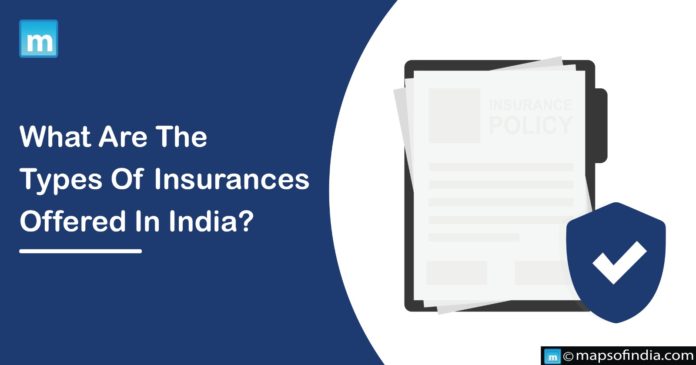India has a robust insurance business that provides a diversified variety of insurance products to meet the demands of its population. Life and non-life insurance are the two primary insurance categories available in India.
Life Insurance
Life insurance protects the insured’s family financially during their demise. Its coverage is another way to save or invest.
-
Term Life Insurance
The most basic type of life insurance is term life insurance. It offers coverage for a set time ranging from one to thirty years. If the policyholder dies within the policy’s term, the insurer provides the survivor with a death benefit. There is no reimbursement if the insured lives the policy’s term.
-
Endowment Plans
Endowment plans are life insurance program that combines protection and savings. These plans have a set period, typically 10 to 30 years. The insured pays premiums over the policy’s term. After the term, the insurance provider pays out a one-time payment comprising the sum promised plus any incentives or returns accumulated.
-
Unit-Linked Insurance Plans (ULIPs)
ULIPs are life insurance policy that blends insurance coverage with investing. These programs invest the insured’s premiums in equities and debt funds. The policyholder can select the investment allocation and swap between funds based on their risk tolerance.
Non-Life Insurance
Non-life insurance, also known as general insurance, provides coverage for losses and damages to property and personal accidents and liability. The types of non-life insurance offered in India are as follows:
-
Health Insurance
Health insurance covers medical expenses incurred due to illness, injury, or hospitalization. The range can be for the individual, family, or group. Health insurance policies can also cover critical illnesses and pre-existing medical conditions.
-
Motor Insurance
Motor insurance covers damages or losses incurred to a vehicle due to accidents, theft, or natural calamities. The coverage can be for third-party liability or comprehensive coverage, which includes damages to the insured’s car.
-
Home Insurance
Home insurance covers damages or losses to the insured’s home and its contents due to natural calamities, theft, or other unforeseen events. The coverage can be for the structure of the home, its contents, or both.
-
Travel Insurance
Travel insurance covers unforeseen events that may occur while travelling, such as medical emergencies, trip cancellations, and loss of baggage or passport. The coverage can be for domestic or international travel.
-
Marine Insurance
Marine insurance covers goods transported by sea, air, or land. The coverage can be for cargo or the vessel itself and includes protection against liability and other risks associated with marine transport.
Note: Life insurance policies provide financial protection to the insured’s family in the event of their death, while non-life insurance policies provide coverage for losses and damages to property and personal accidents and liability. It is critical to properly assess one’s insurance requirements and select the appropriate category of insurance coverage that offers enough protection.




